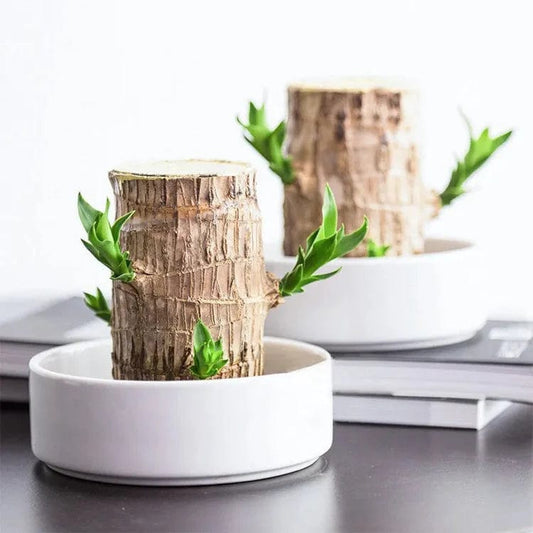How to Prepare Your Garden for Winter?

In mid to late fall, gardeners in colder climates begin to think about winter; not because they look forward to it, but because they know that without proper precautions, low temperatures, drying winds and snow cover can cause problems in their garden.
Plants can suffer wind burn, tree branches can break under the weight of snow, and watering systems can be damaged in prolonged frost.
Overwintering doesn't have to be complicated, though — most tasks fit into regular maintenance and help maintain a healthy garden all year long.
Gardeners in warmer climates are not completely spared. Even if snow is not a problem, unexpected frosts and cold winds can still affect plants and trees.
Local garden centers may not be well stocked with appropriate equipment (like shrub covers), so planning ahead and having a few items on hand can be very helpful.
GENERAL PREPARATION:
- Weeding the garden:
A final weeding at the end of the season can help eliminate hundreds of overwintering seeds that are just waiting for spring to germinate. Learn more about how to get rid of common garden weeds.
- Remove debris:
Clean up fallen leaves and other debris from lawns and beds to reduce the risk of overwintering pests and diseases. Clean, dry leaves (those not from diseased trees or shrubs) can be shredded and used as mulch. Collect the leaves, run them through a mulcher, or simply run the mower over them with a bag attached. Shredding prevents leaves from packing into layers, allowing for better air and water circulation.
- Protect against deer:
When food resources become scarce, deer eat almost anything they can find. Work harder to protect your plants from deer.
SHRUBS, PERENNIAL PLANTS AND TREES:
Landscaping your garden with local, well-adapted plants can help reduce the maintenance needed to maintain a healthy landscape. However, plants only reach full cold hardiness when mature, and newer plants may need a few years to develop this ability. In the meantime, give them extra protection.
- Trim lightly:
Prune perennials that are not wanted in winter: those that blacken and become soft, such as speedwells or geraniums; those that tend to harbor diseases or insects during the winter, such as peonies, bearded irises, and members of the mint family; and those which do not provide aesthetic interest in winter.
Cut off weak or thin branches that might be damaged by the weight of the snow, as well as any crossing branches that might rub and break in strong winds.
Prune the long stems of rose bushes to prevent them from breaking. This should be done once the perennials are dormant, usually after a few hard frosts. Depending on the requirements of each variety, major pruning should be postponed to another time, usually spring or summer.
- Wrapping delicate and newly planted shrubs:
Evergreen shrubs are primarily damaged by dry winter winds, which cause dehydration, and they are much more susceptible to winter damage than deciduous varieties. Shrubs with weak, brittle or floppy branches, or those whose leaves are easily damaged, should be wrapped with a breathable fabric. You can use inexpensive burlap or opt for specialist products like shrub covers, designed specifically to protect bushes and small trees.
- Protect hedges:
To protect a row of shrubs, you can either wrap the entire row or create a windbreak on the side exposed to the prevailing winds, using stakes and protective fabric or a dense shade sail .
- Water:
The root systems of newly planted shrubs and trees are not yet developed enough to easily replace water lost to dehydrating winter winds. Continue to water them regularly until the ground freezes and use mulch to help retain moisture. Give all your plants one final deep watering. They will need this extra moisture to get through the winter, when frozen ground will make it difficult to absorb water.
- Lighten the load:
Plants below roof lines may receive excessive amounts of snow due to roof shedding. Build teepee-like structures on top of these plants to deflect this extra load and prevent branches from breaking.
- Use an antiperspirant:
Protect evergreens from drying winter winds with sprays like Wilt Pruf. Applied to leaves, this type of product reduces moisture loss and prevents dehydration and wind burn.
- Apply mulch:
An insulating layer of mulch can help dormant perennials survive the winter with little or no damage, when applied after the ground has already frozen. “Dormant perennials cope more easily with constant cold, rather than rapid temperature fluctuations and the resulting freeze, thaw, and re-freeze cycles,” writes Traci DiSabato-Aust, author of The Well-Tended Perennial Garden.
PLANTS IN POTS:
- Choose more resistant plants:
Plants and trees grown in pots are more vulnerable than those planted in the ground. The aerial part of the plant may have reached its full cold resistance, but the roots are more exposed to frost without the insulation offered by the soil. Even if a plant is suited to your hardiness zone, choosing one that is hardy to one or two colder zones can help it survive in a pot. Large pots also provide better insulation thanks to a greater volume of soil.
- Bring them inside:
Sensitive perennials and tropical plants can be moved indoors where they will receive sufficient light. Relocate semi-hardy perennials to a basement or garage where they will go dormant. Plants that require a cold period to flower or fruit should be left outside and protected. Find out more tips on plants suitable for overwintering indoors.
- Burying your pots:
If you have space, the pots can be left untouched and planted directly in the ground. This provides the same insulation as planting in the ground.
- Protect your plants:
Group the plants together, placing those most sensitive to cold in the center. Position the grouping in a sheltered location against a building or structure. Provide protection from the wind using a windbreak or screen.
- Protect your pots:
Wrap terracotta pots with layers of bubble wrap and burlap. Cover them with plastic wrap to prevent additional moisture absorption. Turn empty pots upside down to prevent water from pooling and freezing, and cover any that are too large to turn or move.
LAWNS:
-
Apply a fall fertilizer:
Prepare your lawn for winter with an organic fertilizer rich in potassium, such as Espoma Fall Winterizer. -
Mow short grass:
The last mowing of the season should leave the grass at a height of 5 to 7 cm; this will prevent the lawn from harboring fungal diseases under the snow. -
Add lime:
Horticultural lime makes the soil more alkaline, which is better for lawns. The freeze and thaw cycle in winter helps break down the pellets and integrate them into the soil.

WATERING SYSTEMS:
-
Unplug the controller:
Controllers can be damaged by power surges during winter storms. It is therefore better to unplug them rather than simply turn them off.
-
Purge the system:
In cold climates, irrigation systems should be equipped with periodic outlets to evacuate remaining water from the pipes using an air compressor. air to avoid frost damage.
-
Drain exterior faucets:
Turn off the water at the source, then turn on the faucet to drain all the water from the pipe.

EXTERIOR EQUIPMENT:
-
Shut off gas lines:
If you live in an area where winterization is required, you probably won't use your outdoor kitchen or gas fireplace until spring. Outdoor gas lines usually have a shut-off lever near the house, and it's a good idea to turn off the gas to prevent leaks caused by winter damage.
-
Drain the taps:
As with garden taps, turn off the water at the source and turn on the tap to drain any remaining water.
-
Clear drains:
To prevent damage from trapped water freezing in the drain of an outdoor sink, pour a little plumbing antifreeze down the drain to prevent the freeze.
-
Protect furniture:
Bring patio furniture indoors or use suitable covers to protect it outdoors during the winter.












































